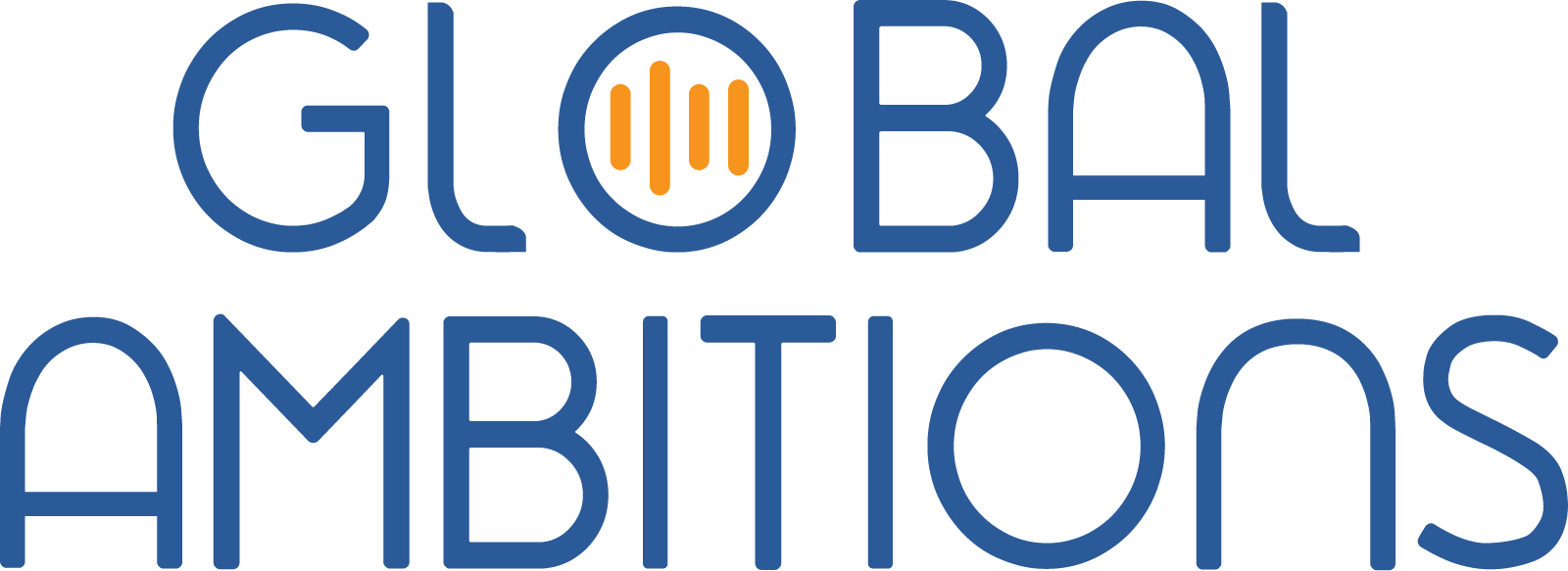With Tim Arata of Locale Solutions
Below is a full transcription of this episode.
Antoine Rey 0:19
My name is Antoine Rey, I will be your host today for this global ambitions podcast episode, and my guest today is Tim Arata. He is a partner at Locale Solutions. Today our topic is going to be the integration, or lack of integration, of the content workflow. Tim, welcome to the program.
Tim Arata 0:36
Antoine, thank you so much. It’s really nice to be here.
Antoine Rey 0:39
Can you briefly tell us about you and your background?
Tim Arata 0:41
Yeah, without giving the full, long biography. Most recently I was at Apple for 11 years and then I kicked over to WhatsApp for a year and a half. And then after leaving, trying to figure out what I wanted to do. And my partners and I, my partners Melissa Bates and Pablo Vasquez, and I ultimately decided to start Locale Solutions. It’s kinda the first company of its kind. We do localization consulting and as people who have spent a great deal of time on the client-side. And, you know, it’s really interesting. At first, we thought our business was helping startups and medium-sized companies, and maybe enterprises to start, or improve their localization process. But like all entrepreneurs, we only had it about half right at the beginning. We also now work a lot with localization vendors.
Antoine Rey 1:34
Well, listen, without further ado let’s dive straight into the topic today So you mentioned that integration workflow seems to be one of the biggest challenges that you have faced in your role as a consultant or as a client. Can you tell us about what is the single biggest challenge for that integration?
Tim Arata 1:52
Boy, it’s hard to name one but we can start speaking about it generally then we’ll hit a couple of others. So, it doesn’t matter, companies large and small, that the biggest challenge they have to get into the market quickly in terms of localization. In this, integration is not just the localization, so say the TMS to something else, it’s more interesting to think about this as the integration of the global content workflow.
Tim Arata 2:19
So if you think about the global content workflow right? You just want to think about where something is authored, then how it gets pushed to localization, how it gets localized, comes back, pushed back into that tool, and then published. So that’s the biggest challenge that companies have and of all sizes, and it really runs across the board. Some companies do a great job of this. Some not so much. Success is often a function of having a dedicated technology team. So that’s really it. In most places, companies that have that dedicated technology team who can help them integrate no matter what, have a lot easier time.
Antoine Rey 2:56
And that technology team is part of the localization team or outside of that?
Tim Arata 3:01
You know that’s, sorry, that’s a great question and a great point because it can work either way. So long as they are dedicated, you know really dedicated to the global content workflow, and I won’t just say localization tools but the global content workflow, it can work. Some companies do have that as part of the localization team. It’s very interesting. But others, and I had the experience where it worked very, very well, and they were not part of the localization team but they were dedicated.
Antoine Rey 3:30
What do you think about the startups and so on then when they move to enterprise level? Are they victims of the content explosion? Where they may start with just one or two systems at the beginning, you know, they might change systems but also, they might add new systems because they have to produce more content. Is that where the biggest kind of a challenge might be?
Tim Arata 3:52
You know, when the whole buzzword of digital transformation came up, that’s what I thought it was. I thought it was purely another buzzword right? But the more you think about it, and it really does… it makes sense. It’s something very new. Because, just as you’re talking about, it’s like content is coming from a lot of different places. Now, that’s not news to people, right? But to get wherever that content is coming from, and then to get it localized and back into the publishing system you want it to, that is a challenge.
Tim Arata 4:23
You know when I spoke with you previously we’re kind of laughing about it, it’s not just a function of a company’s growth. You know, maybe the company has the same amount of content being pushed through, but marketing wants a new marketing system that then has to be integrated and pushed into the global content workflow as well. So it’s really interesting between digital transformation and just general change in the company. Plus growth. That’s where the critical nature of getting the support and making sure your global content workflows are working is really important,
Antoine Rey 4:58
The biggest failure then is probably on the client-side or on the vendor side? Because I can see a flourish of translation management systems that claim to be integrated with all those systems. And then the vendors, the LSPs, that claim to be integrated on their side with the supply chain, the translators, and all the way back to publishing. So what’s the biggest failure? What’s not working well?
Tim Arata 5:22
I tell you what, let’s take the vendor out of the equation right now. Because by the time it gets to the vendor, at least there’s some translation management system, or maybe it’s the vendor’s own translation management system the client is using. So that’s pretty seamless right. But the problem is on the client-side when the people are creating the content, let’s say in their content management system. How well integrated is that content management system with the translation system? Or if it is not just a single content management system, usually it could be the marketing content management system, it could be something else, you know, it’s…you also need to integrate to your translation management system.
Tim Arata 5:59
The other challenge is on the client-side mostly. Its… okay that’s great. You could spit it out but can you auto-publish that as well? And what happens when you have version changes on something that has been translated? Everywhere we go, people just don’t have it locked down. I mean some do. There’s no question, right. Some really do but it’s an ongoing challenge and it’s an ongoing challenge for everybody. Even if they have it locked down, they will have to bring in another technology, where you have to worry about the integration. And you generally… Some companies do, a minority do, they have the technology team to do the integration. But others, it’s kind of beg, borrow and steal resources, so, the lack of dedicated resources to get this integration going. They don’t have the technology, the technology specialists who can successfully do the integration.
Tim Arata 6:52
I think it’s really that simple. Because on the client-side, everyone understands, “Okay, this is a better content management system,” or, “This is really, for our purposes, a superior translation management system.” And the conversation about how those are going to talk to each other, and how, very importantly how it gets from the translation management system back to the content management system and then published, that’s something that can be forgotten about. And if you have those dedicated technological resources that really really helps. And you can have the conversation, “So how does this look? How do we test it?”. Failure to do so often leads, I dare say, back to manual processes.
Antoine Rey 7:36
Can you think of examples where, “I’ve worked with some of those companies, and they have somewhat successfully done that integration”, or we still at a complete failure?
Tim Arata 7:50
Going back to personal experience. In this case, it’s really truly a mixed bag. Right? You’ve got some companies right now that have dedicated technology teams and full awareness of that global concept. And on the other extreme, you have the opposite. It’s kind of chaos, right? Where everything is a big ask etc, etc, etc. Yeah, so it really is across the board. That’s why I think it’s such an interesting topic, by the way, because in some form or the other, most companies really do encounter this, and need to overcome this.
Antoine Rey 8:25
And that might be a question outside of it. So, if someone figures this out, then builds the right integration team there, and they’re going to integrate all their content repositories, with a workflow on the other side with the translation management system, and all the way back to publishing. Then what’s the benefit? What are they getting out of this?
Tim Arata 8:47
This leads us to a whole other thing. The whole benefit is in fact a digital transformation where people say, “We need this critical content available in 20 languages in 48 hours,”. You know, something like that. It enables speed. And that is probably the biggest thing right now. Well, not only enables speed but enables you to get to, again, it’s almost cliche, meeting your user or customer where they want to be on any platform. How they want to digest your content, you know, give it to them wherever they want.
Antoine Rey 9:21
And I suppose in my own experience I’ve seen that content has become faster… more and more obsolete faster, and they have had to be renewed so there’s always that constant update cycle that comes into play when you’re talking about the speed of publishing. So, Tim, can you tell us how you’ve succeeded to get some of the teams that you’ve worked with to get to that content integration workflow?
Tim Arata 9:47
Yeah, very interesting. I have to tell you how I’ve failed and overcame it. Yeah. There are a couple of good examples of that. The first thing is… I like talking about this. When “I” have succeeded. It’s never been… “I” have never succeeded. So the reason I bring it up, I started in that regard by finding the proper partners to get the message across. And then to make the integration step is critical.
Tim Arata 9:51
And why do we need partners to do this? Well, in my own experience, I didn’t have access to all the people upstairs to make the decisions on the investments. But my partners did. Which you split it out, you get more people involved and that was really really helpful. In fact, absolutely necessary. So just remember that “you” or “I” never really achieved any of this.
Tim Arata 10:45
The other thing, kind of tips and tricks, which I think is really funny is, you can and should, and I failed to do it early, I got better at it later, but you plan this whole concept of the shared goal. So with a shared goal, what you do is you take out any confrontation. You know you would go to a big stakeholder and say, you know, what’s your requirement for this type of content, and they said, “We need this content bulletproof in all languages, you know, completely QA delivered and published 48 hours after we originally…”. And so, that’s great. And your answer to someone who’s trying to push for this is, “oh my god, that’s my goal too. Oh I’m behind that. I’m down with that. That’s a great goal, and I’m gonna support that. Okay, and to get this done. Here’s what we need to do.”
Tim Arata 11:34
That’s where you can really… that’s where what you’re talking about what you’re trying to push a little bit, you know, within the company for the good of the company that’s what’s really most effective. It’s a “Yes. I believe you. I share this with you.” So that’s something I had to learn I didn’t do too well at first.
Antoine Rey 11:51
I’m sure you did in some places and it’s interesting because I do believe that the localization team, somehow, is always wrongly placed. But I actually think, in this case, they’re placed in the best position because they can reach out to all the different functions in the organization, whether that’s marketing, UI, even product or international growth, there’s really access to all of the contents, that’s been done across the organization. So, if they managed to build the right sphere of influence, and like you said, contribute to those peers or senior managers both, then they are able to integrate faster.
Tim Arata 12:32
Of course, one of the things that I found effective… again kind of in the tips and tricks for anyone who’s listening to this, is when you’re dealing with rational people, and you’ve established your shared goals right… Something that is very effective with rational people is that the question, “You’ve got to get it out there. What happens if you don’t do this?” To approach this in a very unemotional way is also very effective.
Tim Arata 13:02
For example, you know someone, a big stakeholder, who says we need this content localization. We need to deliver these 20 languages, you know, in 48 hours, bulletproof. Simply say, “Well, if we don’t implement this stuff that is going to help us integrate, we simply can’t do it. So if we don’t do it, we can get it to you in, certainly, 72 hours. That won’t be a problem.” “No, we need it in 48 hours.” “Well, it’s very simple. If we don’t do it we can’t achieve this.” And they said, “Look, you have to make it work.” It’s like, you know, the more unemotional and more detached…they begin to get that concept. Here’s what happens if we don’t do it. That’s also been very helpful.
Antoine Rey 13:48
Let me know because I might use that as a tip for managing my kids because they’re very logical and I become irrational and say, “because… because… because I said so.”
Tim Arata 13:59
Remember the caveat I have is when you’re dealing with rational people.
Antoine Rey 14:05
Well, listen, Tim, thanks very much for participating in this podcast. It has been a pleasure to have you.
Tim Arata 14:09
It’s been really fun to talk about this particular conversation. It is obviously near and dear to a lot of people’s hearts so thanks so much for getting it out there.

Tim Arata
Partner @ Locale Solutions




